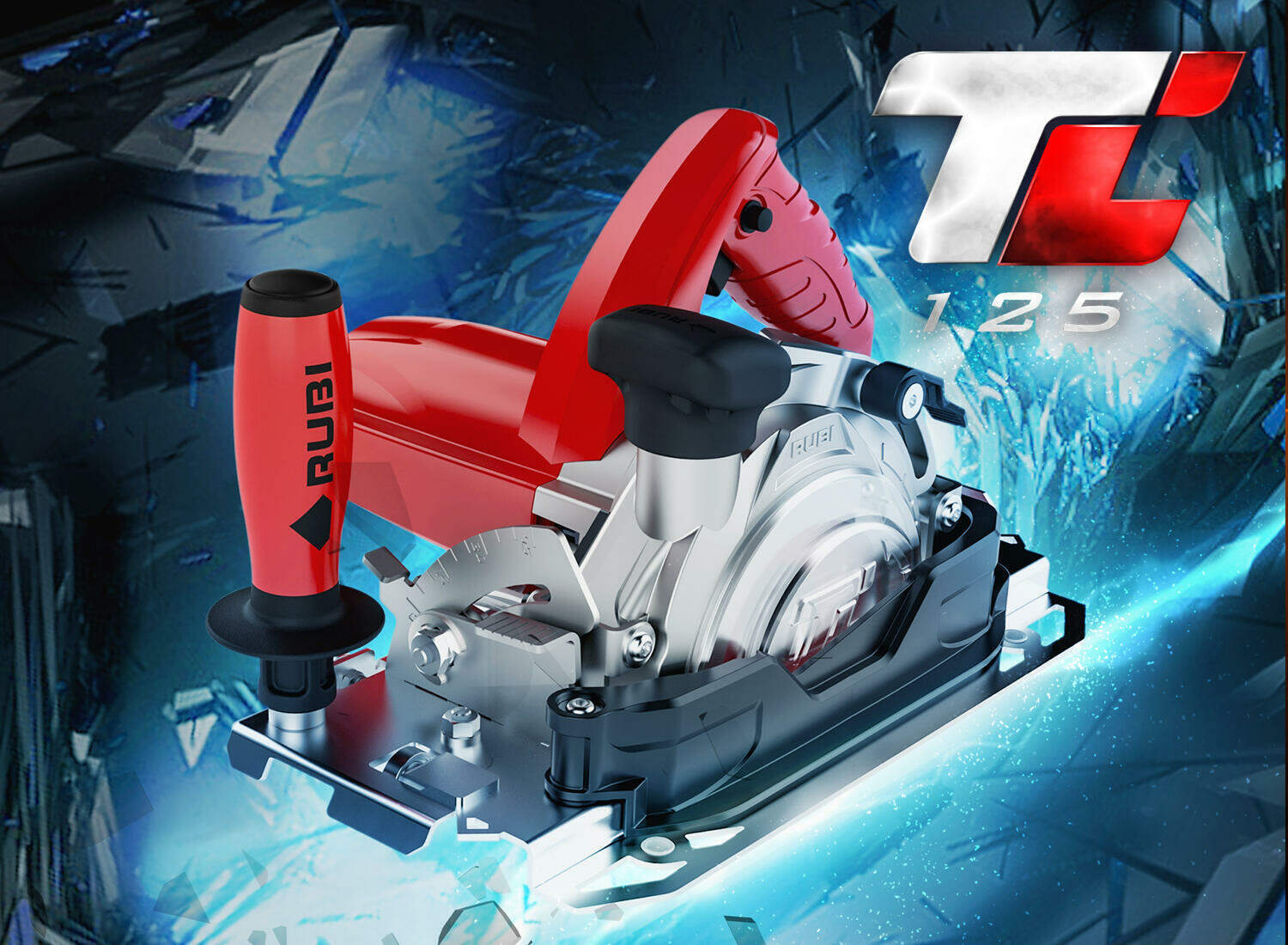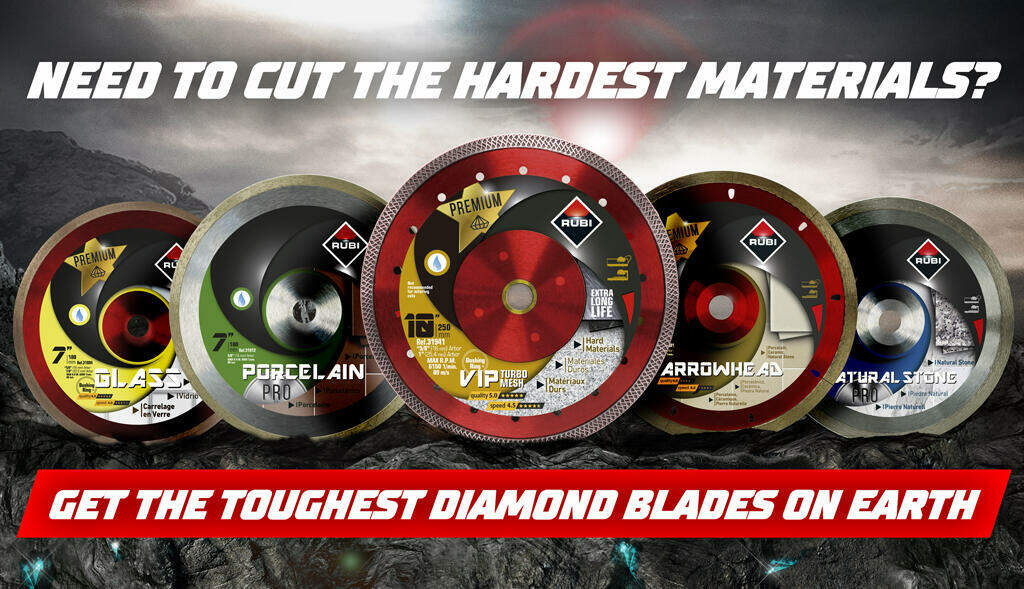
Are you remodeling parts of your home or office? Are you in the construction or interior design business? If so, there’s a good chance you’ll be doing tile installations. RUBI tile wet saws have improved in the last decade, and their features keep improving for better and more precise cuts of tile materials and different sizes.
Why use tile? It’s easy to maintain, durable, cost-efficient, and timeless. You too can learn how to lay tile like a pro. The hardest part, besides choosing the right colors and textures, is figuring out how to size and cut it. This is where you need to know about using a wet tile saw. It’s a nifty piece of machinery that makes cutting tile a piece of cake.
If your renovations require laying tile, a wet tile saw is a must. Save time and money by purchasing one rather than hiring a pro to cut your tile for you.
Interested in learning how? Here are the many advantages of using a wet saw and how you can learn to use it, too.
What Exactly is a Wet Tile Saw?
When it comes to cutting tile, you have two choices. You can use a RUBI tile cutter or a RUBI wet tile saw. Both will cut your tile but the wet tile saw can cut faster and with more accuracy.
A RUBI wet tile saw takes less time but requires a little more skill. They work great for projects of all sizes and use electricity rather than human power.
If you look at a wet tile saw, it will look very similar to a regular table saw. The only difference is the diamond blade and the water sprayer that sprays water onto the working area. You’ll find some saws that connect to a water source or come with a water reservoir.
The main identifier to a wet tile saw is the water sprayer. The point of the water is to prevent the tile from breaking, smoking, or burning as you cut it. There are many more great benefits to a RUBI wet tile saw than just spraying water.
The Advantages of a RUBI Wet Tile Saw

While wet tile saws may be more cumbersome to take to a site, they offer many more advantages than most other types of tile cutters and saws. Here’s exactly how you can enjoy investing in a wet tile saw.
Cuts Extremely Straight
Wet tile saws making cutting extremely straight lines easy. The guide on the saw makes cutting straight lines quick and easy.
They also make the cleanest and most accurate cuts. Every tile you cut will have crisp clean edges that will align with other tiles perfectly, provided you measured correctly.
This is mainly due to the extremely sharp and durable rotating blade. You don’t need to score and snap the tile meaning there are fewer jagged or uneven edges.
Cut Curves
Besides cutting impressively straight lines, you can use a wet tile saw to cut curves and other complex shapes into your tile. This gives you greater room for creativity and flexibility with your tiling projects.
The saw lets you cut curves and other unique shapes with it’s beveling feature. Cutting curves and shapes will take a little practice. Once mastered, your tile cutting ideas and tile designs are limitless.
Cut More Tile Materials
There are many types of tile materials to choose from. Ceramic tiles consist of clay, water, and sand that you mix, form, and bake in a kilt. A similar popular tile is porcelain, which consists of a denser clay.
Other forms of tile include stone, concrete, glass, and cork. The first three are denser and very difficult to cut with a tile cutter. A glass tile, for example, is more difficult to score and cut with a tile cutter, even though it is possible to cut with a manual cutter.

Whatever tile you’re using in your project, a wet tile saw can cut it better. The final cut will be clean, smooth, and accurate.
Less Effort & Saves Time
Since a wet tile saw uses electricity as a power source, you don’t have to wear yourself out trying to score, cut, and snap the tile apart. The saw does the hard work for you saving you time and days of sore muscles.
You will need to pay close attention to what you’re doing when using a wet tile saw. Despite the effort and time-saving benefits, there is still the risk of cutting wrong or injuring yourself.
Good for Jobs of All Sizes
When you consider the advantages above, a wet tile saw makes a great option for projects of any size. Larger tiling jobs will benefit the most from a wet saw.
Large tiling projects tend to require more tile cutting, more tile materials, and more time. If you need to cut more than a few pieces of tile for a project, a wet tile saw makes the most sense.
A Wet Tile Saw Can Be Safe
This may be hard to believe when you think about the diamond saw blade rotating and high speeds, but a wet tile saw is safe as long as you use it correctly.
The water prevents friction when cutting the tile. There’s less heat, smoke, and dust allowing you to use the saw for extended periods of time. The water also helps to keep your work area clear of dust and debris so you can clearly see what you’re doing.
Durable Saw Blades

It’s not just the blades, the entire build of a Rubi wet tile saw is durable and built to last.
Learn How To Use it 1st!
A wet tile saw will work great and fit your needs. The next question you have, is how do you use it?
As mentioned above, any RUBI wet tile saw requires a little practice and some patience to learn. Any time you work a power tool such as a saw, you need to pay close attention to what you’re doing to avoid ruining a cut or causing an injury. With that in mind, here’s how you can safely use a RUBI wet tile saw, but also keep in mind that all manuals are now available online and in the RUBI App. Also if you are more of a visual person, check out out extensive YouTube. Channel for training videos and webinars to learn how to use wet saws and more!
1. How the Saw Works
A properly working wet saw has a blade spinning at full speed and the tile slides smoothly towards the blade. The water should constantly pour into the work area and you shouldn’t have any dust or particles flying beyond the blade area. There also shouldn’t be any kickbacks or jams.
Besides the wet tile saw, you will need a few more items:
- Ear and eye protection
- Empty 5-gallon bucket
- Garden hose of around 15-20 feet
- Short 3-4 foot hose for collection drainage
- Outdoor faucet
2. Connect Water to the Saw
With wet saws, you have the option to use continuous clean water or recirculate the water from the collection tray.
The second option is best for working indoors as it’s drier but the water isn’t the cleanest and your saw must have a pump to redistribute the water. The first option offers clean water but the process is messier meaning you must work outdoors.
Connect your long hose to the outdoor faucet and to the saw. Water should run into the collection bucket placed under the saw and short hose. If water isn’t draining properly, clear the draining tray.
3. Connect to Electricity
Most wet tile saws connect to a 120V outlet or another depending on the instructions. A saw with a pump will need two electrical connections.
Working with a wet saw means you’re working closely with electricity and water. Add a drip loop that’s lower than the saw and the electrical outlet to prevent water from dripping into the outlet.
4. Turn on the Water
Turn on the water at the faucet before you turn on the machine. The water should flow into the work area but shouldn’t splash out of the drip tray. You may need to adjust the flow from the faucet.
If water isn’t covering the work area, don’t begin cutting as you could risk damaging the saw or harming yourself. Keep adjusting the water pressure until the water flows over the saw cutting area.
5. Power On the Saw
You can now put on your ear and eye protection. If everything from above is working properly, you can turn the saw on by flipping the ON/OFF switch to ON.
6. Start Cutting
Depending on the saw, the rotating blade may stay in place but the work tray on the table will move. Some Rubi wet tile saws have the saw blade move while the work area stays in place.
If the blade is stationary, slowly press the tray with the tile into the blade and the blade will easily cut through the tile. If the blade moves, slowly pull the blade into the tile moving it towards you while keeping the tile in place. As you work, keep your hands and fingers away from the blade.
Invest in a Wet Tile Saw Today
A wet tile saw does a phenomenal job cutting tile. It saves you time, energy, and cleanly cuts any tile material you cut. If you want a versatile long-lasting saw, a Rubi wet tile saw is perfect for your needs.
Have questions? Let us know, we’re happy to help you with any of your power tool needs.




Post a comment